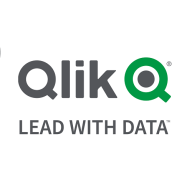


Find out what your peers are saying about Microsoft, Salesforce, Oracle and others in Reporting.
I have noticed a return on investment with Splunk Enterprise Security, as it delivers substantial value for money.
Splunk's cost is justified for large environments with extensive assets.
This saves a significant amount of time, particularly for reports that would have needed around fifty people.
The ROI of using Tableau extends to its seamless integration across various platforms, as it's from Salesforce and thus not limited to any specific cloud provider.
If you want to write your own correlation rules, it is very difficult to do, and you need Splunk's support to write new correlation rules for the SIEM tool.
I have sought assistance from Splunk Enterprise Security support in the past, particularly during deployment, and they provide friendly and effective help.
The technical support for Splunk met my expectations.
They provide quick email and phone responses and have Thai-speaking personnel.
The technical support for Tableau is quite good.
I find Tableau's technical support to be good with elite support, but it struggles with usual, general support.
They struggle a bit with pure virtual environments, but in terms of how much they can handle, it is pretty good.
It is easy to scale.
I find it easy to scale Splunk Enterprise Security for our environment.
Tableau is easy to use across various dimensions, whether on-premises or on the cloud.
The solution is fully scalable and performs well even with large datasets, provided there is proper supporting hardware.
Tableau is easy to scale.
It provides a stable environment but needs to integrate with ITSM platforms to achieve better visibility.
It is very stable.
The application hangs after continuous use due to the buildup of cache.
I rate the stability a five or six because Tableau updates very often with new versions or patches.
Improving the infrastructure behind Splunk Enterprise Security is vital—enhanced cores, CPUs, and memory should be prioritized to support better processing power.
What Splunk could do better is to create an API to the standard SIEM tools, such as Microsoft Sentinel.
Splunk Enterprise Security would benefit from a more robust rule engine to reduce false positives.
We cannot send the entire Excel file reports via email within Tableau.
The product owner should enhance its benefits or clarify its role.
It sometimes requires extensive investigation to determine why the data does not appear correctly.
I saw clients spend two million dollars a year just feeding data into the Splunk solution.
The platform requires significant financial investment and resources, making it expensive despite its comprehensive features.
Splunk is priced higher than other solutions.
Power BI as a much cheaper alternative.
A license for 150 users costs around $17,000 USD per year.
The cost for viewer rights is around $60, but it can vary based on the business and is usually for a year.
This capability is useful for performance monitoring and issue identification.
They have approximately 50,000 predefined correlation rules.
The Splunk Enterprise Security's threat-hunting capabilities have been particularly useful in later releases.
A significant feature for me is the real-time connection to data sources because it effectively manages large data sets.
Tableau serves as a stable dashboarding tool for higher management, aiding in quick decision-making.
Building hyper extracts and visualization capabilities make Tableau a robust tool for data analysis.



QlikView is a Business Intelligence tool that allows you to keep tabs on all of your business-related information in a clean, clear, and easy to access database that is intuitive to build and simple to navigate. It is ideal for business owners who wish to improve overall output by creating the most productive system possible.
Splunk Enterprise Security is widely used for security operations, including threat detection, incident response, and log monitoring. It centralizes log management, offers security analytics, and ensures compliance, enhancing the overall security posture of organizations.
Companies leverage Splunk Enterprise Security to monitor endpoints, networks, and users, detecting anomalies, brute force attacks, and unauthorized access. They use it for fraud detection, machine learning, and real-time alerts within their SOCs. The platform enhances visibility and correlates data from multiple sources to identify security threats efficiently. Key features include comprehensive dashboards, excellent reporting capabilities, robust log aggregation, and flexible data ingestion. Users appreciate its SIEM capabilities, threat intelligence, risk-based alerting, and correlation searches. Highly scalable and stable, it suits multi-cloud environments, reducing alert volumes and speeding up investigations.
What are the key features?Splunk Enterprise Security is implemented across industries like finance, healthcare, and retail. Financial institutions use it for fraud detection and compliance, while healthcare organizations leverage its capabilities to safeguard patient data. Retailers deploy it to protect customer information and ensure secure transactions.
Tableau is a tool for data visualization and business intelligence that allows businesses to report insights through easy-to-use, customizable visualizations and dashboards. Tableau makes it exceedingly simple for its customers to organize, manage, visualize, and comprehend data. It enables users to dig deep into the data so that they can see patterns and gain meaningful insights.
Make data-driven decisions with confidence thanks to Tableau’s assistance in providing faster answers to queries, solving harder problems more easily, and offering new insights more frequently. Tableau integrates directly to hundreds of data sources, both in the cloud and on premises, making it simpler to begin research. People of various skill levels can quickly find actionable information using Tableau’s natural language queries, interactive dashboards, and drag-and-drop capabilities. By quickly creating strong calculations, adding trend lines to examine statistical summaries, or clustering data to identify relationships, users can ask more in-depth inquiries.
Tableau has many valuable key features:
Tableau stands out among its competitors for a number of reasons. Some of these include its fast data access, easy creation of visualizations, and its stability. PeerSpot users take note of the advantages of these features in their reviews:
Romil S., Deputy General Manager of IT at Nayara Energy, notes, "Its visualizations are good, and its features make the development process a little less time-consuming. It has an in-memory extract feature that allows us to extract data and keep it on the server, and then our users can use it quickly.
Ariful M., Consulting Practice Partner of Data, Analytics & AI at FH, writes, “Tableau is very flexible and easy to learn. It has drag-and-drop function analytics, and its design is very good.”